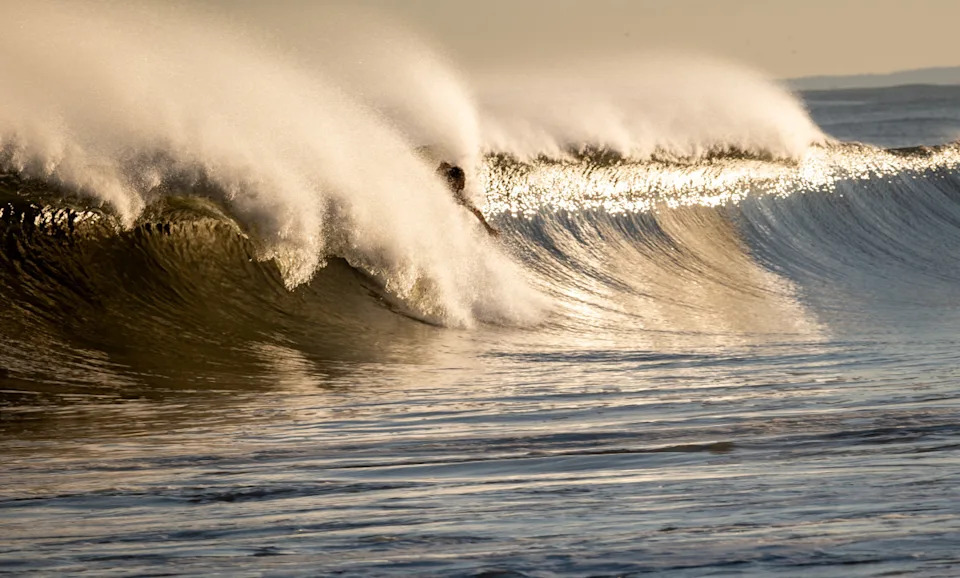'100 Foot' Waves Are Reportedly Heading For The U.S. originally appeared on The Spun.
Hurricane Erin is heading for the United States and so, too, could some massive waves, reaching more than 100 feet in height.
The major storm, which is currently a Category 3 hurricane, is weakening as it approaches the United States. Still, it could have serious impact on much of the East Coast. The storm is currently impacting the Turks and Caicos Islands while wreaking havoc in the Virgin Islands and Puerto Rico.
The hurricane initially reached Category 5 status, before weakening as it got closer to the United States. But while the storm has been downgraded to a Category 3 hurricane, it could still cause some major, major swells on U.S. beaches.

Jean-Raymond Bidlot, senior scientist in ocean modeling at the European Centre for Medium-Range Weather Forecasts (ECMWF), told Newsweek that he believes monster waves are possible, due to the severity of the incoming storm.
The waves could reach a striking height.
How big could the Hurricane Erin waves actually get?
Bidlot told Newsweek that he thinks the waves could reach 100 feet in height, if not taller.
“The latest forecast does indeed indicate that the largest significant wave height could reach values in excess of 50 feet with an associated most likely largest wave of more than 100 feet," he told Newsweek.
It's unlikely that those waves could be seen from a U.S. beach, but they could be approaching the East Coast.
"Hurricanes are known for their very powerful winds, usually confined to an area around the storm center, but as indicated, waves tend to radiate away from the storms, propagating towards coastal areas even though the brunt of the storm might still be miles away from the coast," he added.
"These storm-driven waves might not be the largest but will still be significant and have the potential to create very hazardous conditions when reaching the shore leading to intense surf conditions and dangerous rip currents well before the arrival of the storm clouds and rain associated with the hurricane."
Meanwhile, another scientist suggested that the 100 foot mark was probably not going to happen.
“While 100 feet can’t be ruled out, I think they would only be possible if the storm become a Category 4 or 5 storm. I think waves near the center of 50-75 feet are much more realistic (assuming a Category 3 storm), said AccuWeather’s lead hurricane expert Alex DaSilva.
The National Weather Service is warning about rip currents
While the truly massive 50 to 100 feet waves are not likely to impact those on U.S. beaches, rip currents could.
The major hurricane could impact rip currents, which can cause life-threatening situations.
The National Weather Service issued an official warning ahead of the storm potentially making landfall.
"Stay calm and relax. Float to conserve energy. Rip currents don't pull you under. Don't swim against the current. You may be able to escape by swimming out of the current in a direction following the shoreline, or toward breaking waves, then at an angle toward the beach. If you feel you will be unable to reach shore, draw attention to yourself. Call and wave for assistance," the NWS stated.
Stay safe in the water this week as Hurricane Erin approaches.
'100 Foot' Waves Are Reportedly Heading For The U.S. first appeared on The Spun on Aug 17, 2025
This story was originally reported by The Spun on Aug 17, 2025, where it first appeared.







Comments